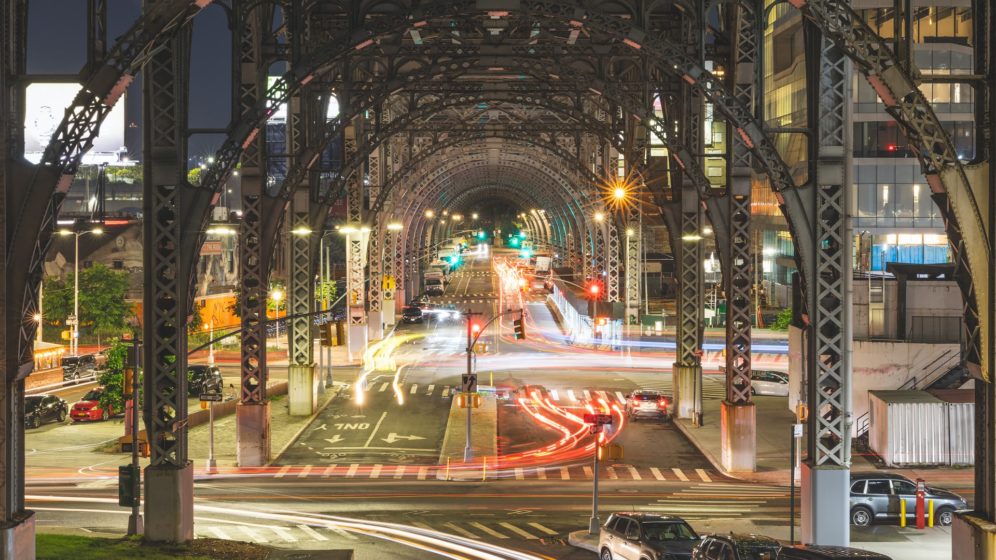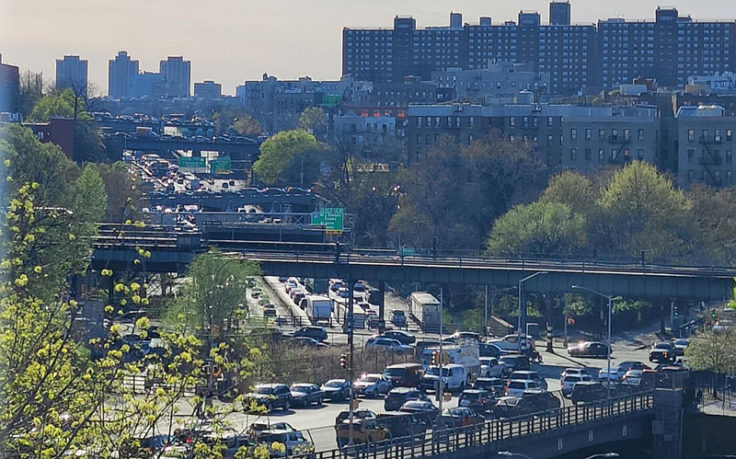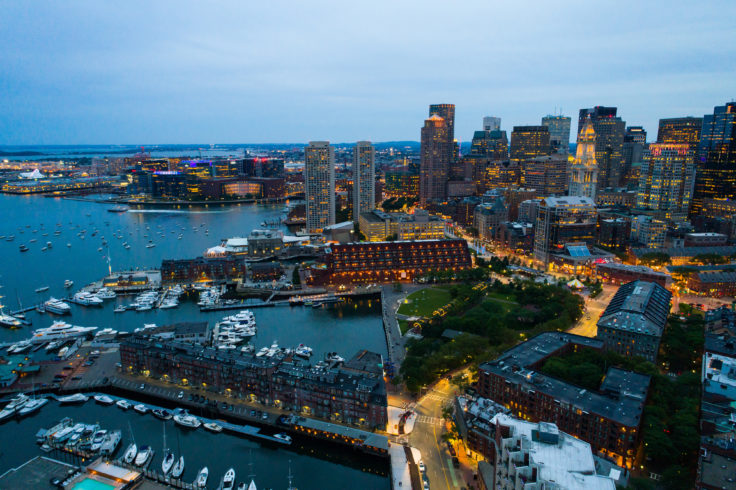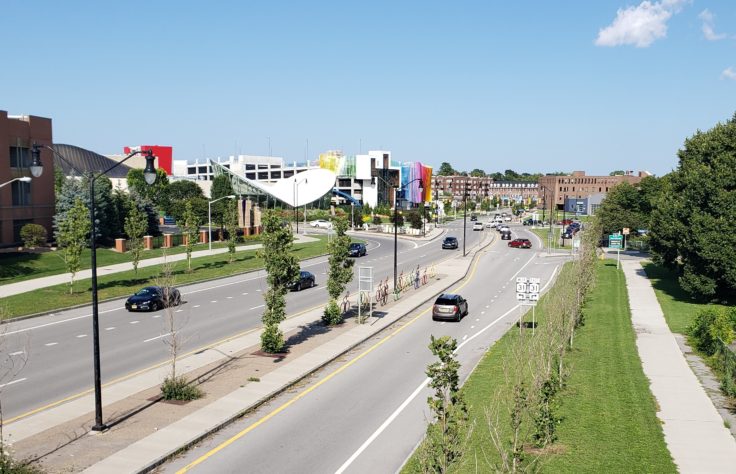
June 19, 2022
An Antiracist Future For Our Highways
This Juneteenth, marking the first anniversary of the official federal holiday in the United States, it is essential that we reflect on the policies and institutions that have perpetuated inequity, racism, and discrimination in our transportation systems — and look towards solutions to rebuild and reimagine infrastructure that works for everyone.
On the heels of the movements for racial and social justice that swept the US and the world in 2020, the need to take a critical lens and reflect on the extensive history of systemic racism in our daily lives has never been more urgent. It is clear that — from healthcare to education to policing to transportation — a legacy of unequal access and segregation in American policies and programs persists to this day. In order for the nation to undertake the difficult journey of dismantling these systems — and to envision better ones that can serve everyone’s needs — we need to take an antiracist approach that identifies and addresses the root causes of these issues in our institutions of power, policy, and planning.
In the realms of land use and transportation development in particular, this legacy is perhaps the most tangible in the patterns of highway and road construction that continues to marginalize and discriminate against low-income communities of color in urban areas across the country. As a result of the COVID-19 pandemic, the impacts of structural racism in our physical infrastructure have been made all the more visible by the unequal access to healthcare and essential services that have disproportionately affected low-income, minority populations. Today, renewed movements to rectify these wrongs and make both physical and policy-oriented changes to our transport systems provides a glimmer of hope for the future of our cities, beginning with our approach to highways.

The Legacy of Our Highways
Transportation has long been recognized as an unequal driver of mortality for communities of color, as issues of safety, affordability, accessibility, and performance have made the very means for reaching vital services and opportunities more challenging for marginalized groups. Transportation planners used highways to isolate or bisect neighborhoods with people of color — particularly Black communities — by cutting them off from adjoining areas of economic and social importance. Following the enactment of the first federal US highway law in the 1950s, highways were continuously built through long-standing neighborhoods in major cities without community input or engagement. This practice of transportation racism not only had severe impacts on the social and physical fabric of these areas, they also limited critical access to employment and economic opportunities, creating far-reaching ripple effects for the growth of communities of color.
Throughout the US and elsewhere, the placement and construction of highways have been a source of trauma for many communities and continue to perpetuate crises of mortality and public health to this day. There are more than 60% more Black pedestrian fatalities than White, while Black residents are five times more likely to depend on public transportation to access services and opportunities than their White counterparts. The pandemic was also proven to be more deadly for populations that have had consistent exposure to air pollution — low-income, minority neighborhoods have been shown to have much higher levels of fine particulate air pollution (compared to adjoining areas) due to the presence of major thoroughfares. Across the country, Black and Latino communities are exposed to 56% and 63% more particulate matter from cars, trucks, and buses than White residents. The proximity of many of these neighborhoods to large highways and roads, and the resulting health consequences, has a clear connection to the discriminatory planning strategies of the past several decades.
At the same time, more and more resources continue to be invested in the capital expansion of highways, rather than focusing on upgrading or fixing existing infrastructure and creating complete streets in the most impacted neighborhoods. Transportation investments in the U.S. have historically focused on roads and highways at the expense of public transportation. This disparity reduces opportunities for urban communities who greatly depend on public transit — rather than private vehicles, highways, and expressways — to access employment and other essential services. This legacy of highway-centric planning has had clear impacts on the physical and socioeconomic growth of communities across the US, and it is crucial that officials and planners recognize this history in order to develop more inclusive, bottom-up approaches. Read more about the history of discriminatory zoning and transportation policies in this 2021 ITDP article.

A Path Forward
To address the challenges brought on by discriminatory transport planning, we must begin by centering the perspectives of marginalized communities and their advocates, and recognize the intersectional issues of environmental justice, infrastructure, economics, and race. According to the Urban Institute, any government agency with a transportation focus must submit a comprehensive plan for public and community outreach for their projects. Officials and policymakers should utilize these dedicated outreach resources to better involve environmental justice advocates and ensure that local leaders are in conversation with policymakers in all transportation projects. Agencies should also make sure that critical data sources are representative of the most vulnerable groups, from people with disabilities to the elderly to non-native English speakers. It is also important for transport officials to work closely with the community-based organizers who have been doing this work for decades, and that are the most deeply connected to local needs and perspectives. In this way, transportation agencies can best recognize and prioritize residents’ voices to rectify and address the inequities they face in the near and long-term.
Many cities have also undertaken a physical approach to the legacy of highway and road policy. By removing expressways, particularly elevated ones, over the past few decades, many cities and local governments seek to reconnect isolated neighborhoods to the rest of the city. For example, Rochester, in upstate New York, filled in nearly a mile of the Inner Loop East expressway in the last decade, which previously acted as a moat that isolated predominantly minority neighborhoods and the city’s downtown. Since then, the city has reconnected streets that were divided by the highway with parks and public space, making the neighborhood more whole again. As a result, walking and cycling in the neighborhood have increased by 50% and 60%, respectively. Now developers are planning and building new and more connected commercial spaces and housing units, more than half of which are considered affordable. Other cities that have removed, or are removing, highways dividing neighborhoods include Cincinnati; Chattanooga, TN; Detroit; Houston; Miami; New Orleans; and Saint Paul, MN.
To truly work towards more equity and to rectify historical inequities, planners must take an antiracist lens to both existing and new transport projects. It is critical to recognize how highway and transport design and development fits into larger systems that perpetuate inequality and segregation across the country. As a piece by the Kinder Institute argues, we need to acknowledge the intersecting issues of structural racism that occur within transportation agencies and the diversity and inclusion efforts undertaken with every new program and policy. We also cannot make land use decisions without accounting for the fact that all connected issues — redlining, highway construction, environmental injustice, economic exclusion, and systemic disinvestment — have left many communities living in places that are not safe, sustainable, walkable, or accessible. A willingness to civically engage with community advocates for new and ongoing transportation proposals — and to hold officials accountable for exclusionary strategies and actions — is crucial to reimagining our current systems.

Promise also lies in the recent Infrastructure Investment and Jobs Act (IIJA) passed in November 2021. While certainly not a complete solution, the landmark legislation signifies the largest federal investment in public transit and transport equity ever in the US. The trillion-dollar includes at least $1 billion set aside to reconnect divided communities and, in particular, to dismantle highways and expressways that have decimated neighborhoods throughout our cities. The program, called “Reconnecting Communities,” will focus on the legacy of highway construction built directly through communities and remove or repurpose infrastructure barriers that have exacerbated inequality. The plan also includes several proposals designed to curb other racial inequities exacerbated by transportation projects and zoning policies.
It is clear that, in this pivotal moment in history, we need to recognize and directly address the structural racism in our institutions, and the transportation sector is certainly not an exception. An antiracist perspective on transportation infrastructure requires us to acknowledge the root causes of unjust, inequitable planning and land use policies that have been employed throughout the last century. While there is no easy fix or one-size-fits-all solution, recognition of the discriminatory elements of past strategies is critical if we are to learn from — and inform — future infrastructure projects so that these patterns are not repeated. There is hope — while the country’s recent social and political turmoil has shown us the cracks in our institutions, it has also served as an urgent wake-up call for so many of our local governments, planners, policymakers, and activists.
